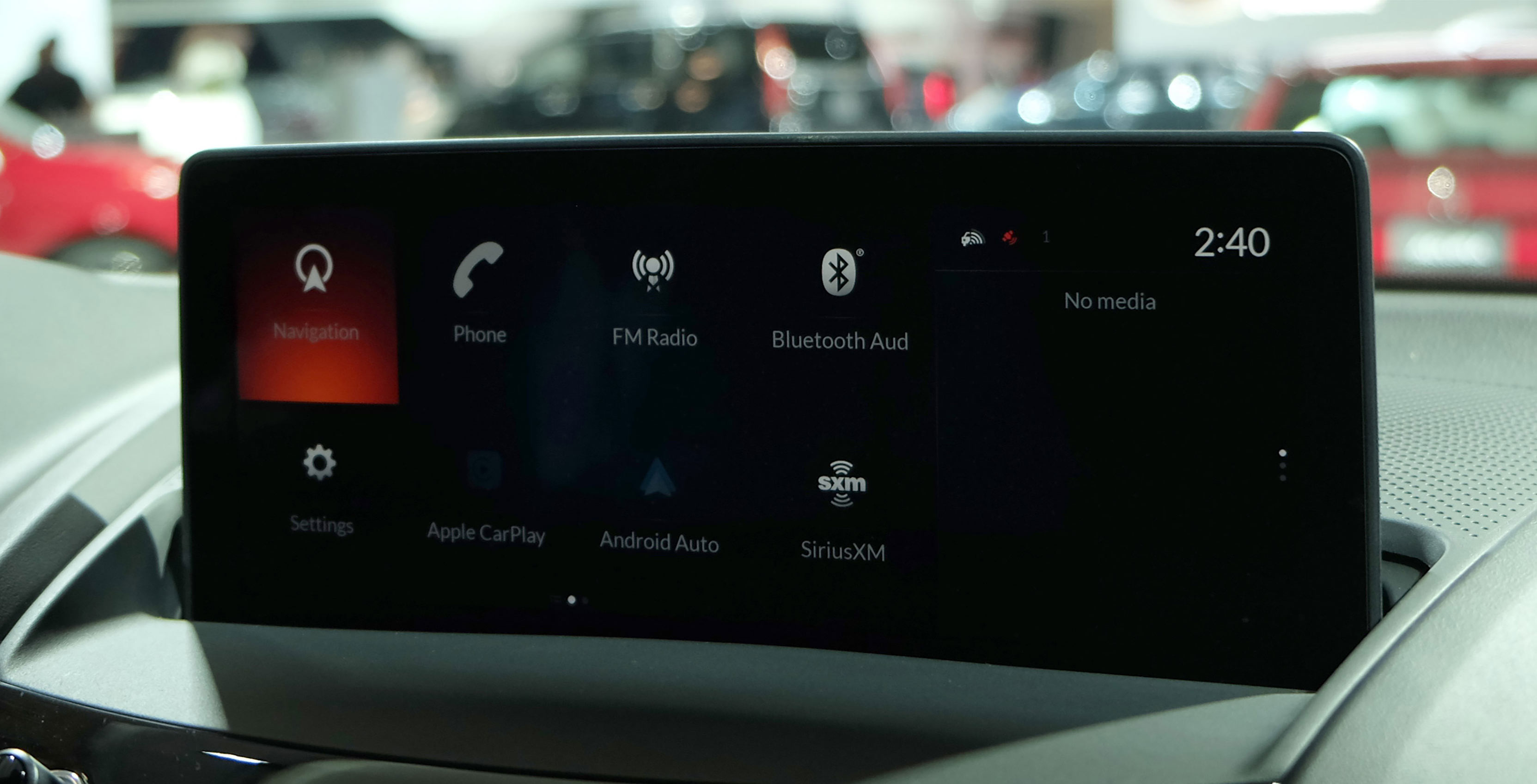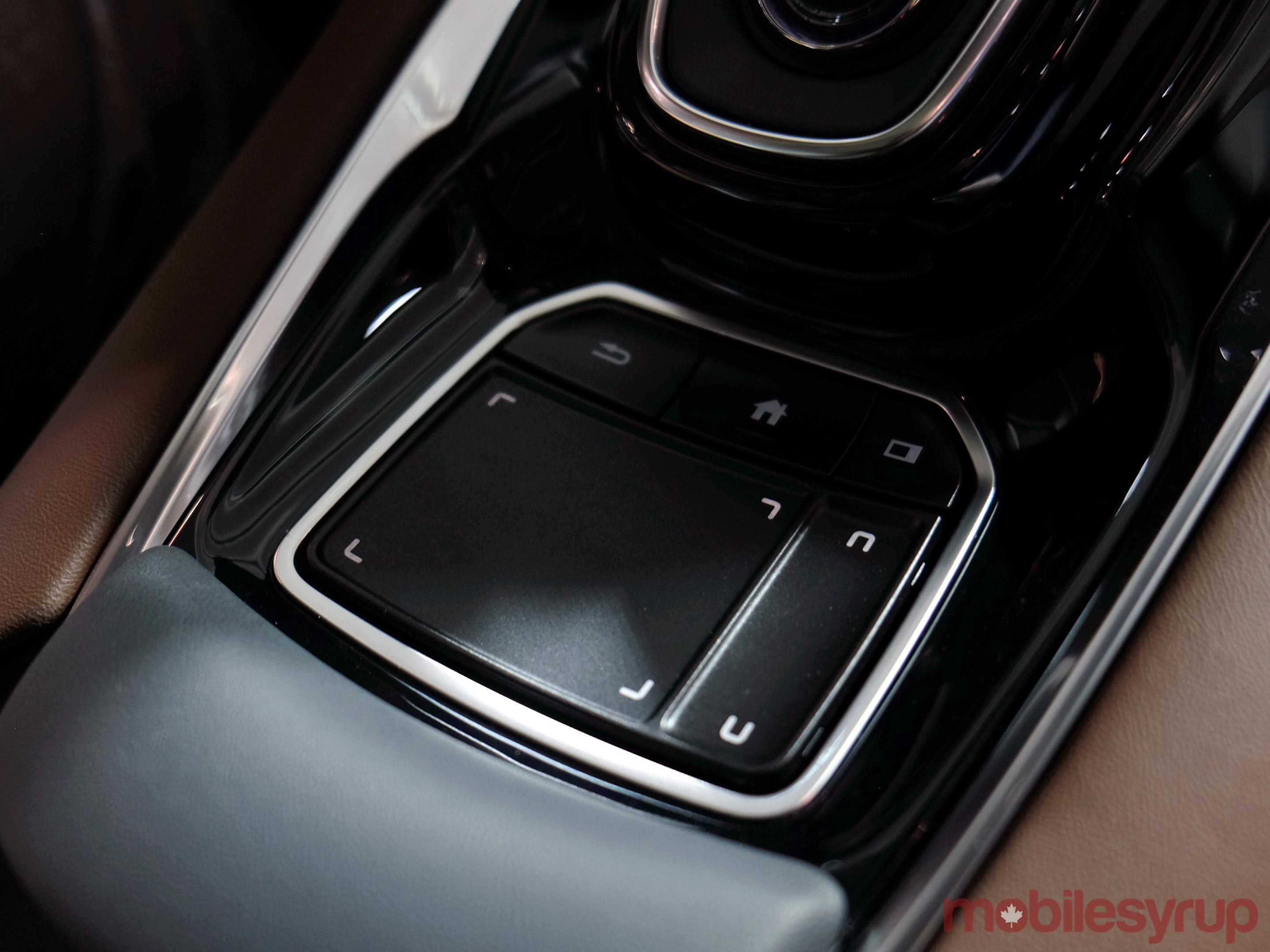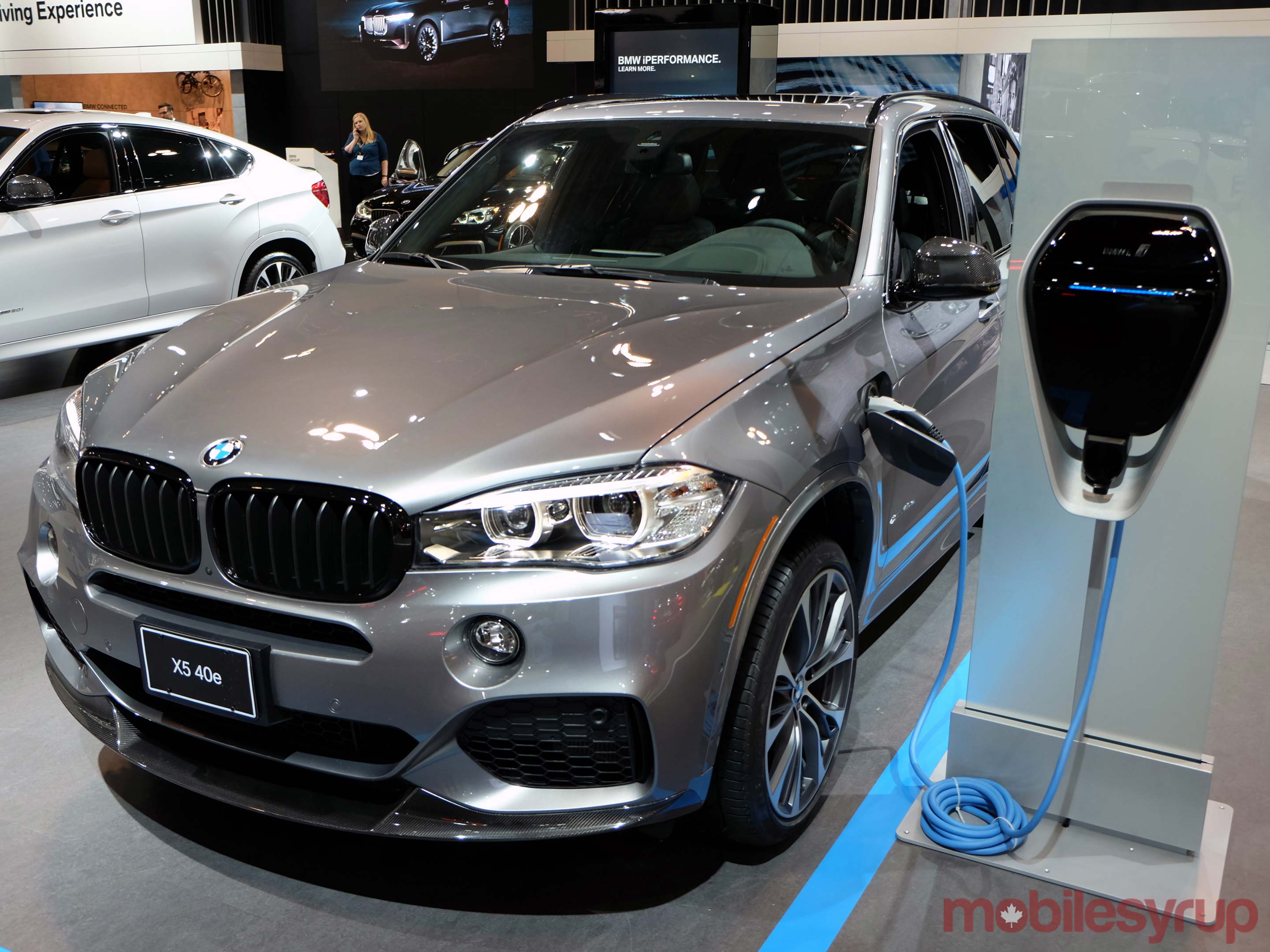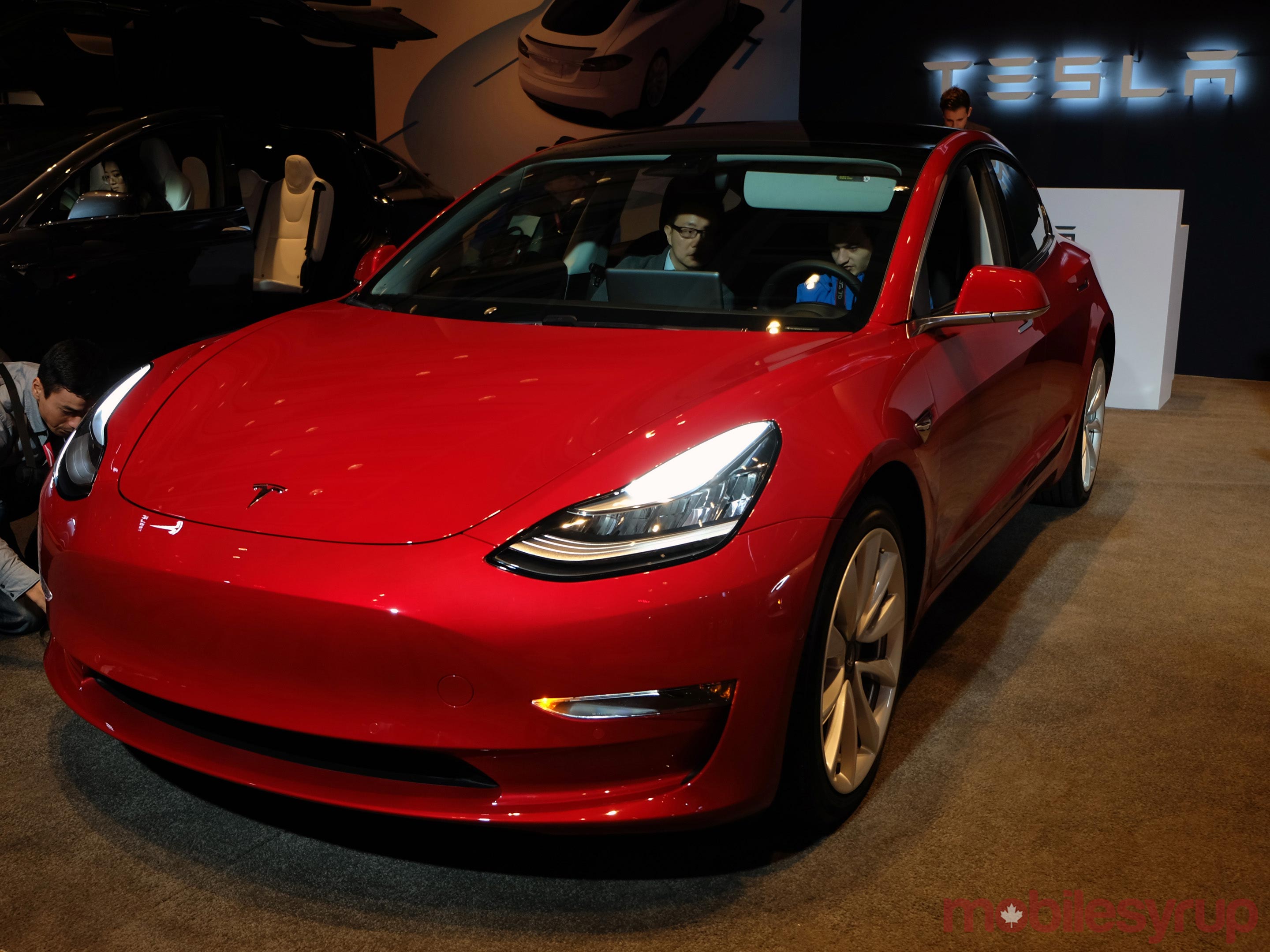
The Canadian International Auto Show (CIAS) is underway in Toronto, and amongst the shiny new rides is some new technology expected to be available in 2018.
Unlike an exhibition like CES, the auto show circuit doesn’t focus as much on the future as it does the present. It’s still largely about the latest models.

Acura gets a makeover
If there was one brand in desperate need of an infotainment makeover, it was Acura. The new 2019 RDX luxury crossover SUV was on display at the show and featured a revamped system the automaker calls True Touchpad Interface.
For years, Acura used a dual-screen setup for its AcuraLink system, whereas this new design goes with a single 10.2-inch display. It’s not touch-sensitive because it’s been elevated to the driver’s line of sight, so input is on the touchpad in the centre console.
The touchpad is split into two parts like the screen is. Acura calls this an ‘A’ zone and ‘B’ zone, displaying two pieces of content in a split-screen view. You could display a navigation map on one, and weather or music information on the other. Or even vice versa.

That’s not a new feature, as split-screen displays are common with certain other automakers. But the difference is in the touchpad itself. German OEMs like to use rotary wheels as a controller, while American, Japanese and Korean ones have largely adopted touchscreens or a hybrid with physical buttons.
Trying it out myself, the touchpad was smooth and responsive, not unlike a good trackpad on a laptop. Drivers could adjust sensitivity, though there’s only a “low” and “high” setting to choose from. Pinch-to-zoom is supported for navigation maps too.
Apple CarPlay will come standard, with Siri Eyes Free when paired via Bluetooth. Acura won’t confirm that Android Auto will be supported, yet the new interface is built on Android itself. The prototype I saw at the show had Android Auto compatibility, for whatever that’s worth.
It’s also unclear if Google Assistant will work through a Bluetooth connection like Siri does. Without testing it, I can’t be sure, but I suspect it will work because the integration wouldn’t be hard for Acura to include.
Acura is saying its own voice recognition platform has been significantly improved, though I can’t really confirm that, either way. There will be LTE inside for an in-car Wi-Fi hotspot as well, with data priced about the same as other OEMs offering the same feature.
The new RDX is expected to launch in the summer, except pricing is undisclosed. It’s also unclear how many trims there will be, and what infotainment features might incur an additional fee at the dealership.

BMW gets on track
BMW’s ConnectedDrive app in the United States has had features the Canadian one is missing going back to 2016. That is set to change with a new update coming later this year.
It applies to both the iOS and Android versions, which is big because the Android app has been neglected in comparison to the one for iPhone users.
The premium German automaker had announced in November 2017 that it would support Google Assistant through the ConnectedDrive app. Users can verbally ask to check whether doors are locked or windows are closed. For an electric model like the i3, you could check battery level and inquire about range in relation to a destination and traffic conditions. You could even send an address to the car that way.
The integration will work through any Google Home or compatible speaker that supports the voice assistant.

Meanwhile, the iDrive infotainment system will get bumped up to version 7.0, though likely won’t be rolling out to any of BMW’s models this year. The earliest would be in the new X3 that should come to market in early 2019. That also includes the Amazon Alexa voice integration that was previously announced. Don’t expect to see Alexa in a BMW coming out this year.
It doesn’t appear that new apps will be added for direct integration, which is a shame. Having Waze inside the cabin would be a nice addition. I wasn’t able to see the new version in action, so can’t speculate on what might change between now and its release.
Mini, BMW’s other make, will finally get telematics features in newer models coming late in the year. A MiniConnected app will manage those features on a mobile device, so expect the experience to be similar to BMW.
Other tidbits
Toyota had the 2019 Avalon on hand, which will be the first from the company to include support for CarPlay. After holding out for as long as it could, Toyota is caving in. The Avalon is confirmed as the only vehicle for this year, and it’s not clear if 2018 model cars running Entune 3.0 might get an update that enables it.
Lexus will also get CarPlay this year in select vehicles that will run Enform 2.0. Android Auto doesn’t look to be in the mix at all for either brand.
The Tesla Model 3 was on display in the exotic car section below the main show floor. This was its Canadian debut, and aside from the fiery red body, there was the 15-inch touchscreen inside dominating the dash.

The all-electric vehicle will have a range of 354 km or 499 km, depending on which battery you choose. That range is on par with the Chevrolet Bolt.
Tesla’s autopilot semi-autonomous driving features are also included. Unfortunately, as the car was stationary inside, I never got to really try anything out inside.
Despite government rebates that will save Ontarians up to $14,000 and Quebeckers up to $8,000 when buying the car, it’s probably not going to get to customers in 2018, unfortunately.
With Montreal already done in January, and now Toronto ongoing, the Canadian auto show circuit will continue in earnest. Calgary is next from March 14-18, Ottawa-Gatineau from March 22-25, Vancouver from March 28-April 1, and Edmonton April 12-15.


